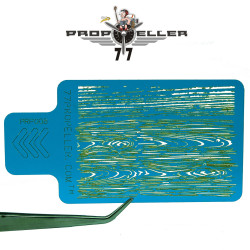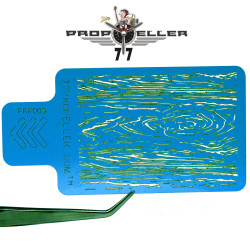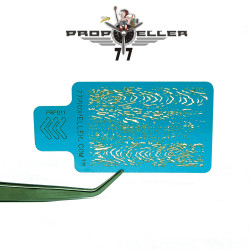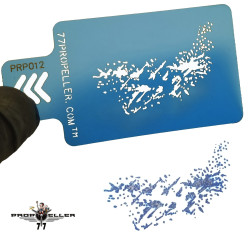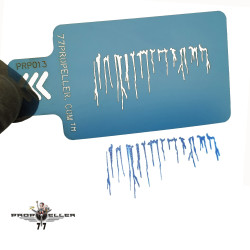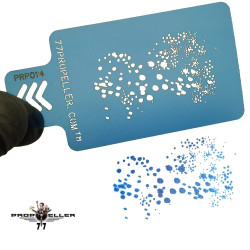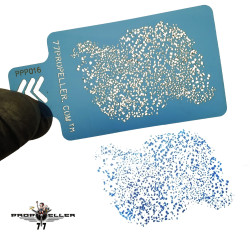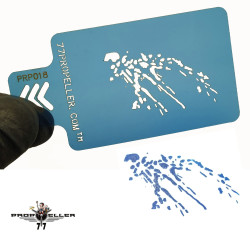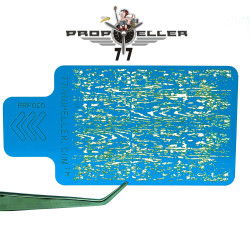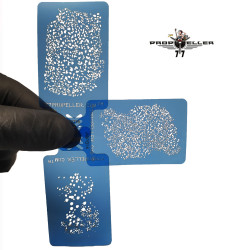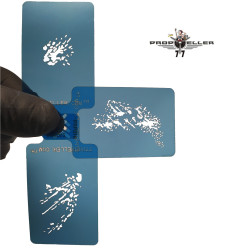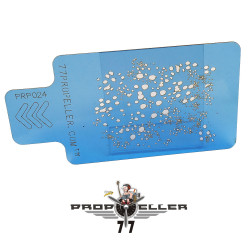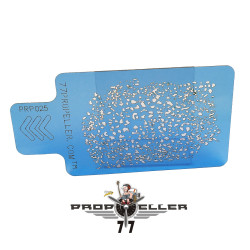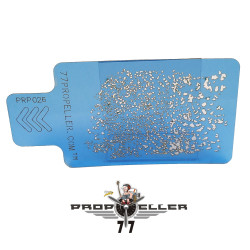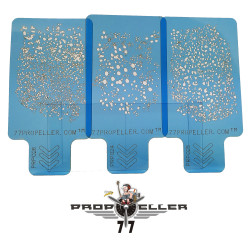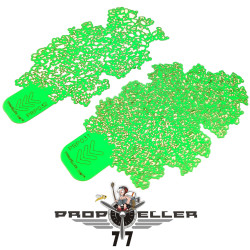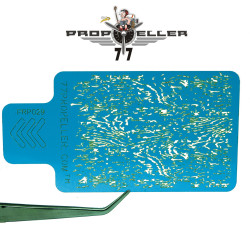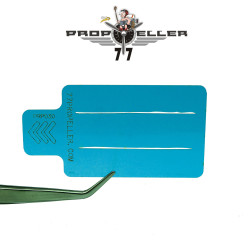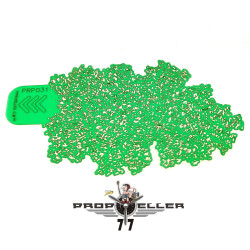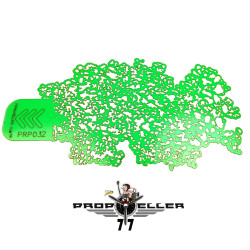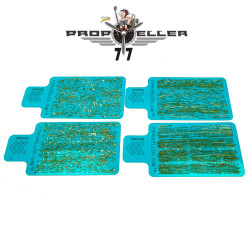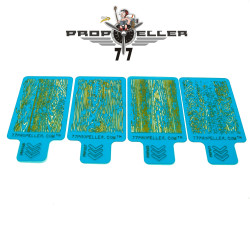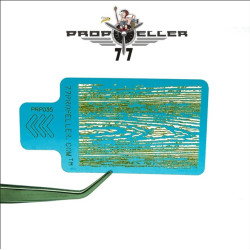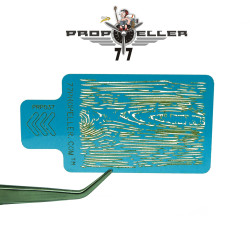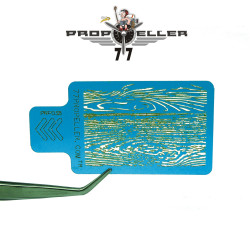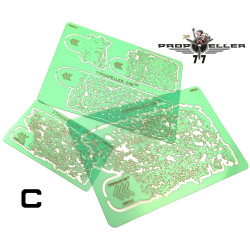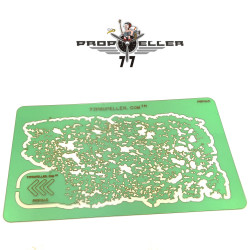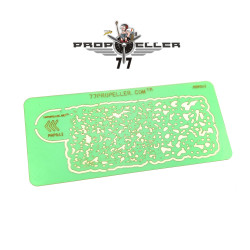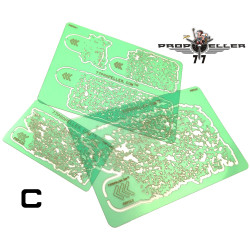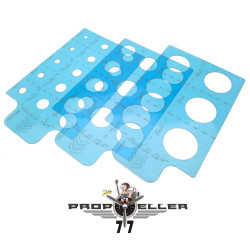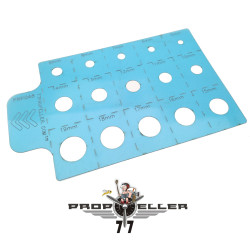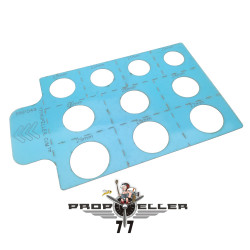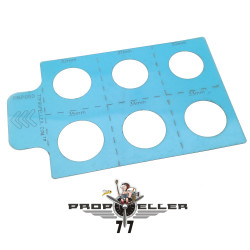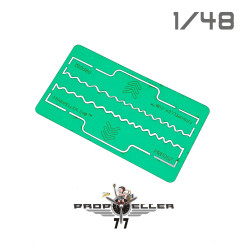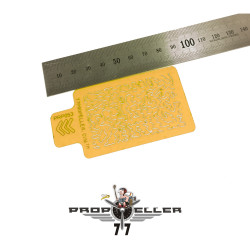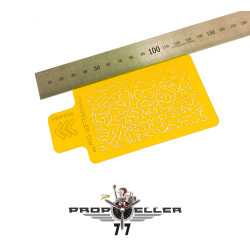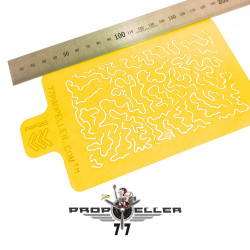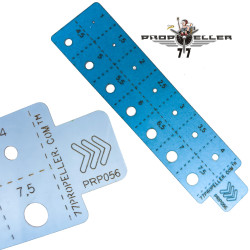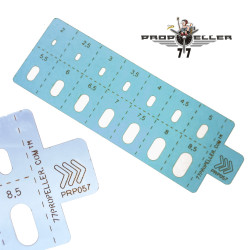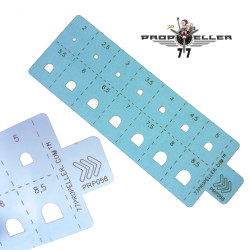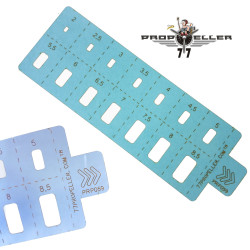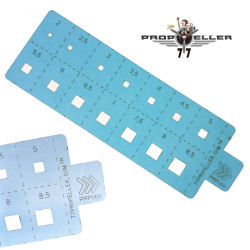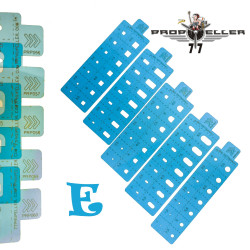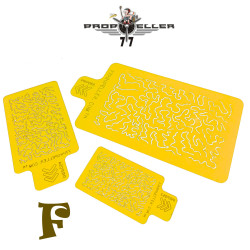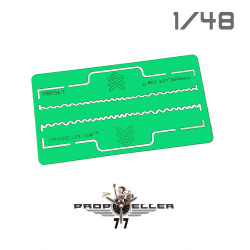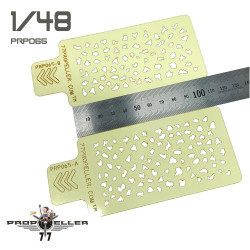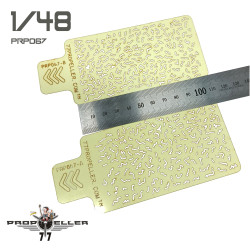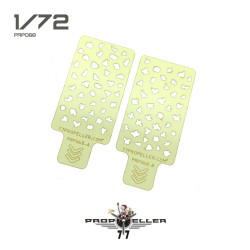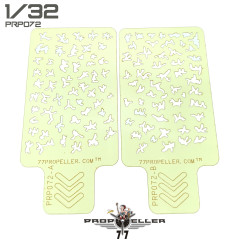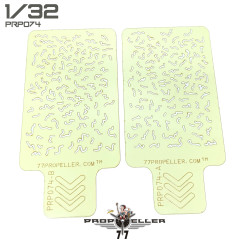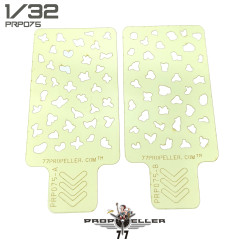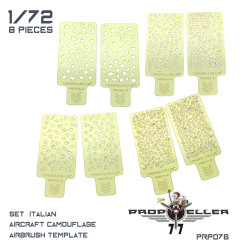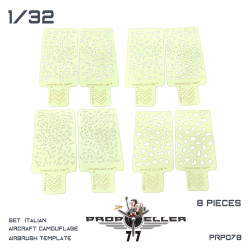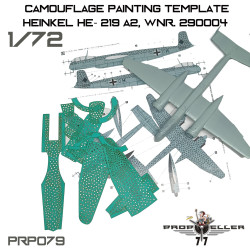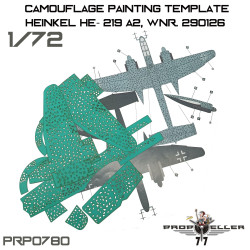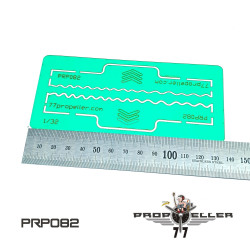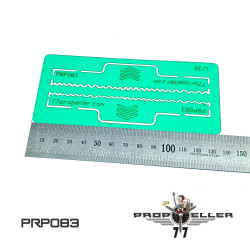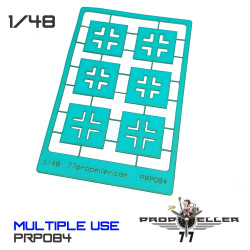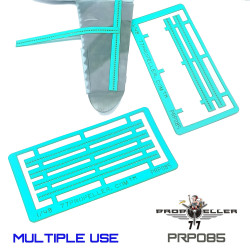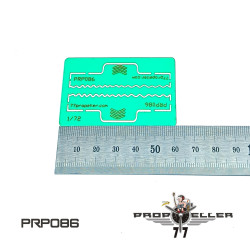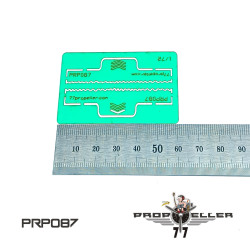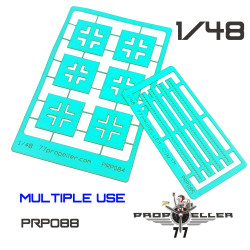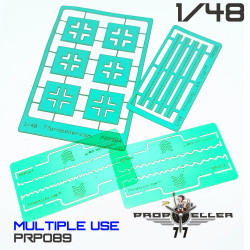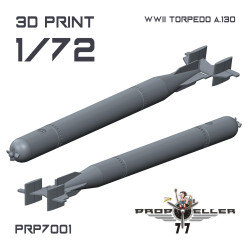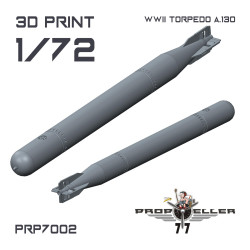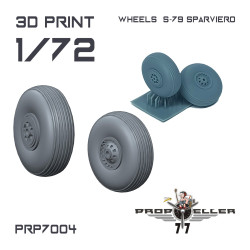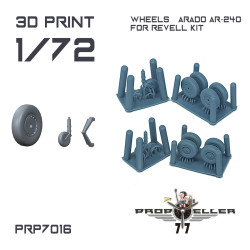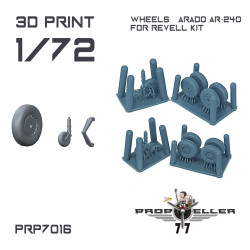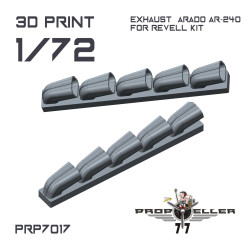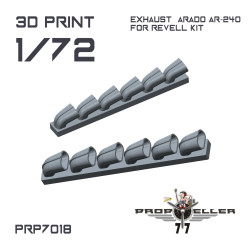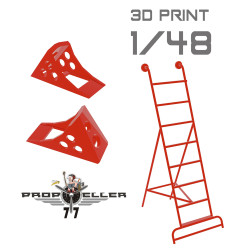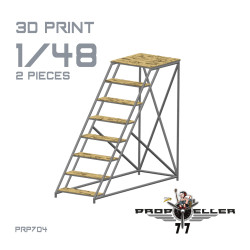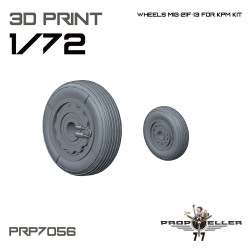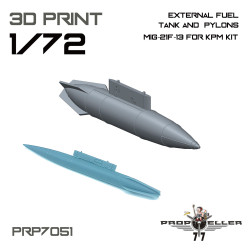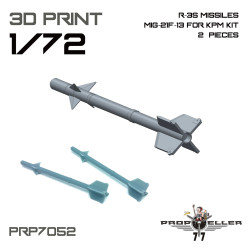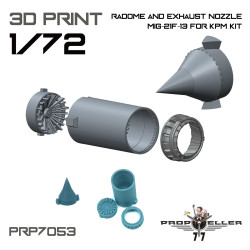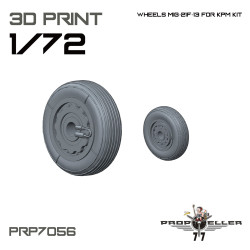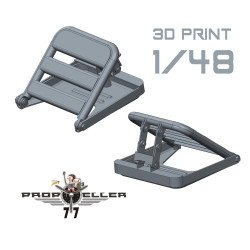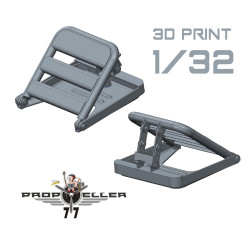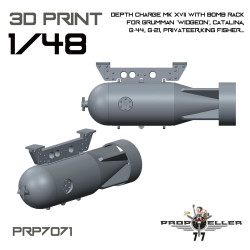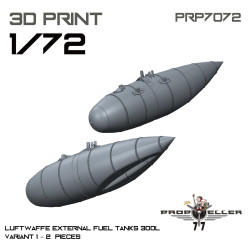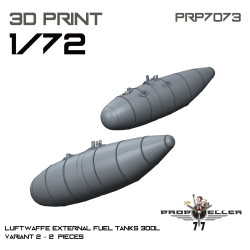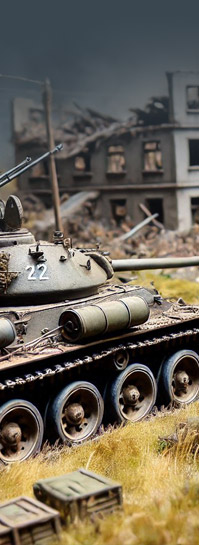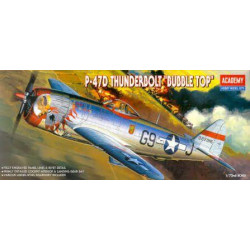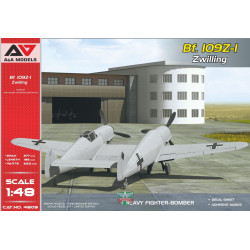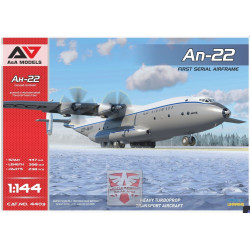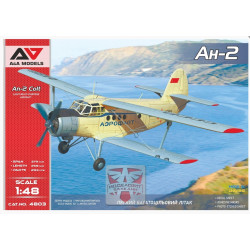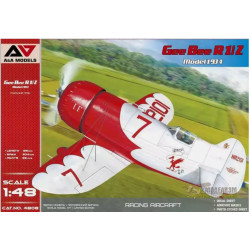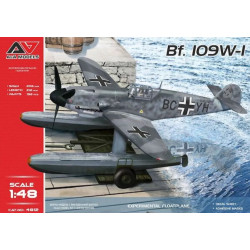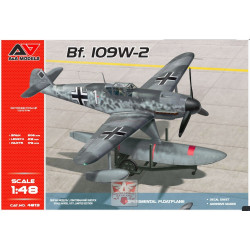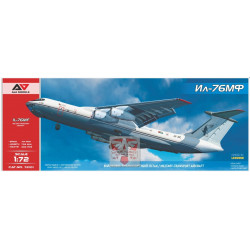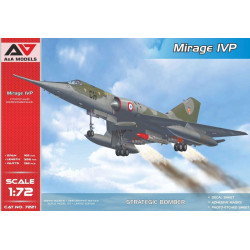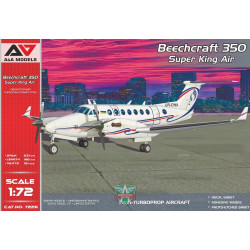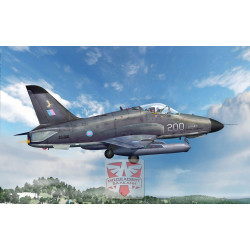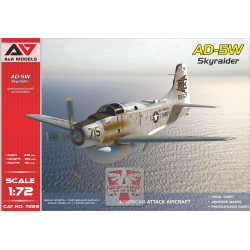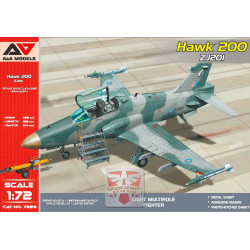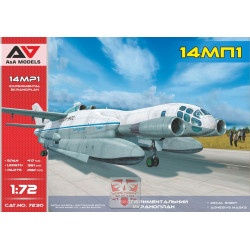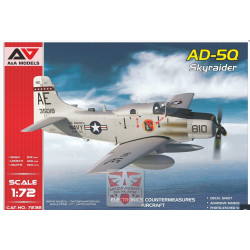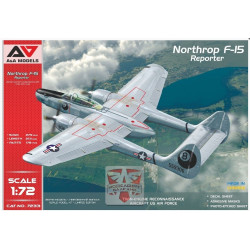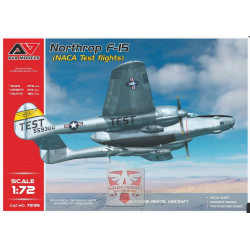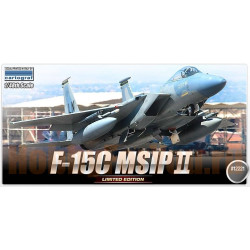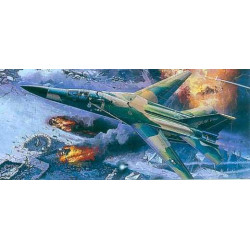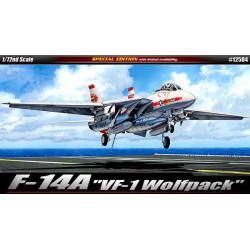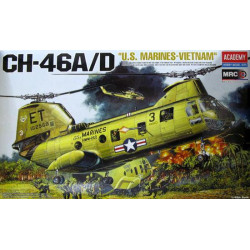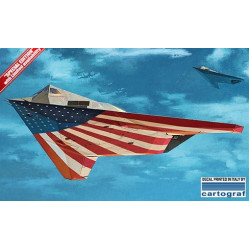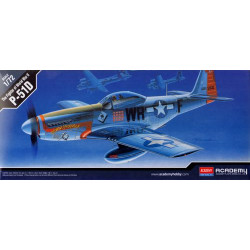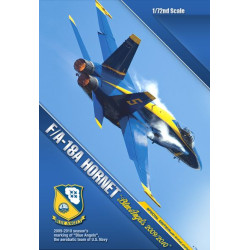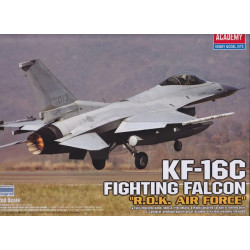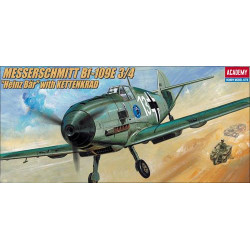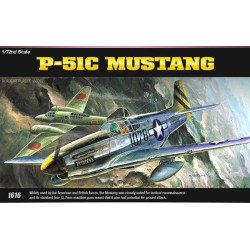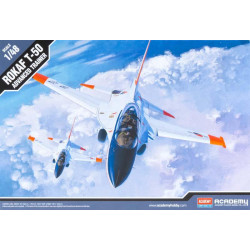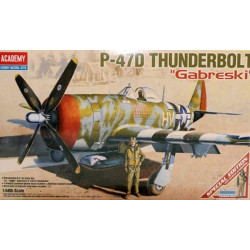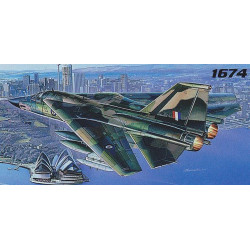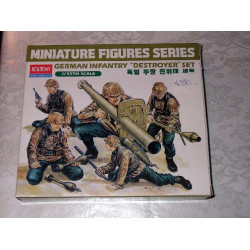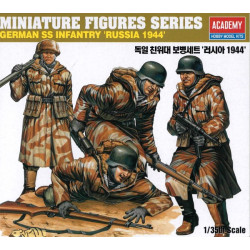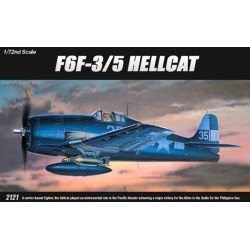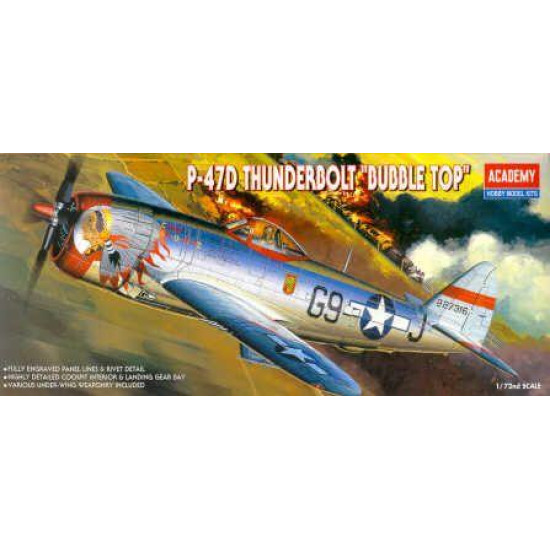
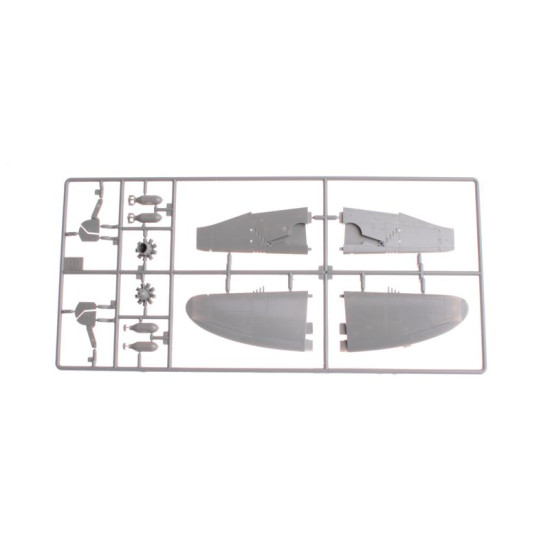

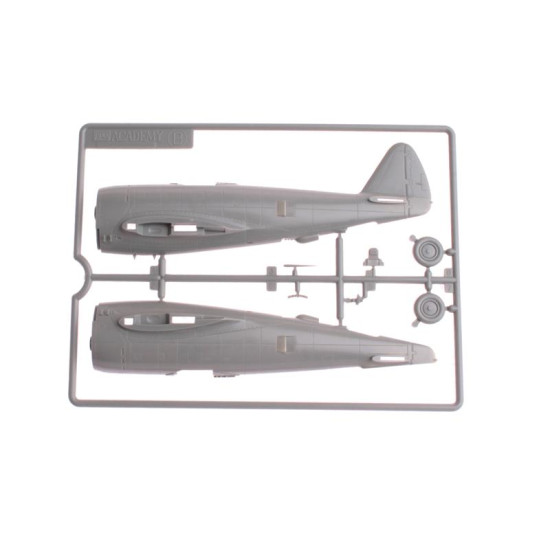
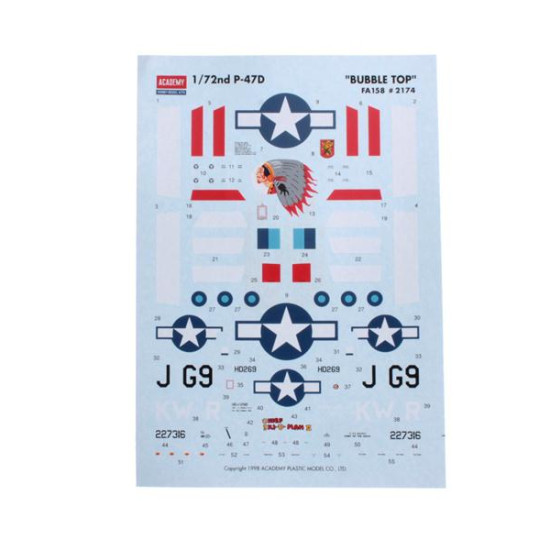
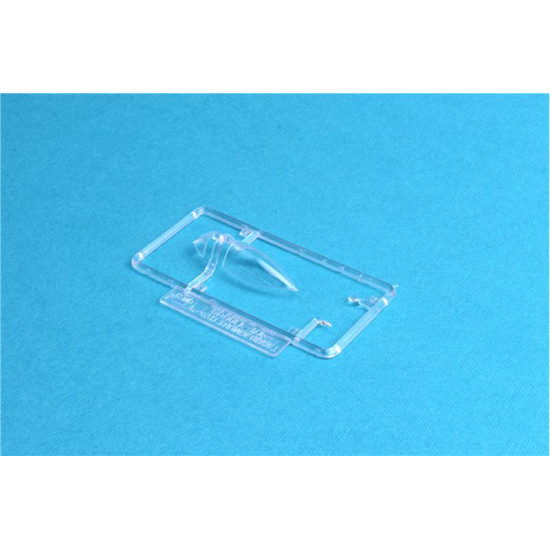






Fighter P-47D Thunderbolt Bubble Top
1/72
Academy AC12491
Manufacturer: Academy
Scale: 1/72
Material: Plastic
Paint: Unpainted, Unassembled, Kit do not contain paints and glue.
Condition: New in Box
The Republic P-47 Thunderbolt was one of the largest and heaviestfighter aircraft in history to be powered by a single piston engine. It was heavily armed with eight .50-caliber machine guns, four per wing. When fully loaded, the P-47 weighed up to eight tons, and in the fighter-bomber ground-attack roles could carry five-inch rockets or a significant bomb load of 2,500 pounds; it could carry over half the payload of theB-17 bomber on long-range missions (although the B-17 had a far greater range). The P-47, based on the powerful Pratt & Whitney R-2800 Double Wasp engine, was to be very effective as a short-to-medium range escort fighter in high-altitude air-to-air combat and, when unleashed as a fighter-bomber, proved especially adept at ground attack in both the World War II European and Pacific Theaters.
The P-47 was one of the main United States Army Air Forces (USAAF) fighters of World War II, and served with other Allied air forces, notably those of France, Britain, and Russia. Mexican and Brazilian squadrons fighting alongside the U.S. were equipped with the P-47.
The armored cockpit was roomy inside, comfortable for the pilot, and offered good visibility. A modern-day U.S. ground-attack aircraft, theFairchild Republic A-10 Thunderbolt II, takes its name from the P-47.In 1939, Republic Aviation designed the AP-4 demonstrator powered by a Pratt & Whitney R-1830 radial engine with a belly-mounted turbocharger. While the resultingRepublic P-43 Lancer was in limited production, Republic had been working on an improved P-44 Rocket with a more powerful engine, as well as on a fighter designated the AP-10. The latter was a lightweight aircraft powered by the Allison V-1710 liquid-cooled V-12 engine and armed with eight .50 in (12.7 mm) M2 Browning machine guns. The United States Army Air Corps (USAAC) backed the project and gave it the designation XP-47.
As the war in Europe escalated in spring 1940, Republic and the USAAC concluded that the XP-44 and the XP-47 were inferior to the German fighters. Republic unsuccessfully attempted to improve the design, proposing the XP-47A. Kartveli subsequently came up with an all-new and much larger fighter which was offered to the USAAC in June 1940. The Air Corps ordered a prototype in September, to be designated the XP-47B. The XP-47A, which had almost nothing in common with the new design, was abandoned.
The XP-47B was of all-metal construction (except for the fabric-covered tail control surfaces) with elliptical wings, with a straight leading edge that was slightly swept back. The cockpit was roomy and the pilot's seat was comfortable—"like a lounge chair", as one pilot later put it. The pilot was provided with every convenience, including cabin air conditioning. The canopy doors hinged upward. Main and auxiliary self-sealing fuel tanks were placed under the cockpit, giving a total fuel capacity of 305 U.S. gal (1,155 L).The XP-47B first flew on 6 May 1941 with Lowry P. Brabham at the controls. Although there were minor problems, such as some cockpit smoke that turned out to be due to an oil drip, the aircraft proved impressive in its first trials. It was eventually lost in an accident on 8 August 1942, but before that mishap, the prototype had achieved a level speed of 412 mph (663 km/h) at 25,800 ft (7,864 m) altitude, and had demonstrated a climb from sea level to 15,000 ft (4,600 m) altitude in five minutes.Republic addressed the problems with a sliding canopy that could be jettisoned in an emergency, a pressurized ignition system, and new all-metal control surfaces. (Improved engine-accessory access had to wait until the P-47C introduced a new engine mount.) While the engineers worked frantically to get their "dinosaur" to fly right, the USAAF ordered 171 P-47Bs. An engineering prototype P-47B was delivered in December 1941, with a production prototype following in March 1942, and the first production model provided in May. Republic continued to improve the design as P-47Bs were produced, and although all P-47Bs had the sliding canopy and the new General Electric turbosupercharger regulator for the R-2800-21 engine, features such as all-metal control surfaces were not standard at first. A modification unique to the P-47B was the radio mast behind the cockpit that was slanted forward to maintain the originally designed antenna wire length in spite of the new sliding canopy.
The P-47B led to a few "one off" variants. A single reconnaissance aircraft designated RP-47B was built. In September 1942, the 171st and last P-47B (41-6065) was also used as a test platform under the designation XP-47E to evaluate the R-2800-59 engine, a pressurized cockpit with a hinged canopy and, eventually, a new Hamilton Standard propeller. The plans for production were cancelled after increased emphasis on low-level operations over Europe
P-47 Thunderbolt
P-47D-40 performing at an airshow in 2001
Role
Fighter-bomber
Manufacturer
Republic Aviation
Designer
Alexander Kartveli
First flight
6 May 1941
Introduction
1942
Retired
1966, Peruvian Air Force
Primary users
United States Army Air Forces
(United States Air Force)
Royal Air Force
French Air Force
Produced
Farmingdale, NY (-RE serial numbers) Evansville, IN (-RA serial numbers)
| General Product Info | |
| Material | NOT SET |
| Scale | 1/72 |
| Type | Fighter / Interceptor |
We have the lowest worldwide shipping. And it's totally simple.
EUROPE, USA, CANADA TURKEY, ISRAEL, EGYPT, UE CHINA, JAPAN, HK, S.KOREA | AU NZ MX South America, Asia | |
| Order weight up to 0.22kg or 0.48lb | US$ 8.90 | US$ 8.90 |
| Order weight up to 0.44kg or 0.97lb | US$ 13.95 | US$ 17.90 |
| Order weight over 0.44kg or 0.97lb | US$ 19.99 | US$ 29.99 |
| Order total over $150 | FREE | PROMO US$ 19.99 |
Shipping to some countries not qualifies for the free shipping option but costs not over $29.99 for any sized order. Sorry for that, your location is too far.
- Stock: Out Of Stock
- Model: AC12491
- Weight: 0.22lb
- DATE ADDED: 01/11/2014
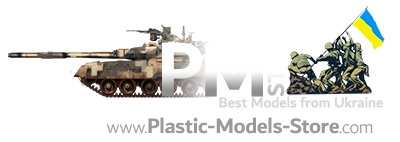
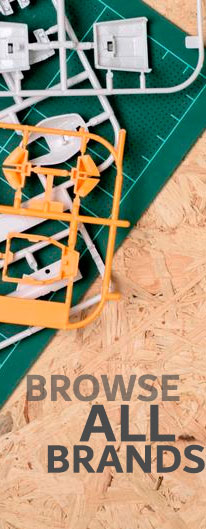


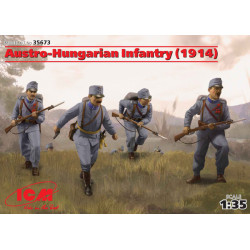

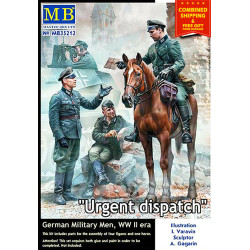
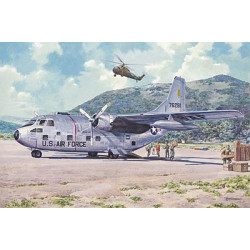
-250x250w.jpg)
